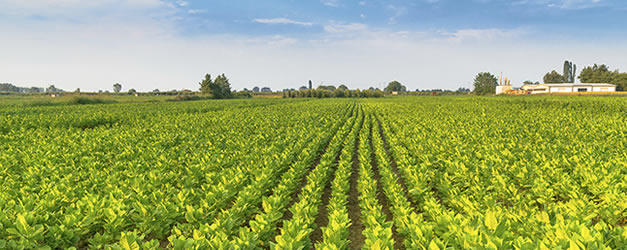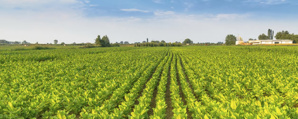The uplifting news implies there will be sufficient supplies for the second time in a row year for food, and protein to bolster the revamping of cattle business that was pulverized by a dry season a couple of years back bringing about the liquidation of the steers rearing group that is still in charge of record high costs of meat today. The absence of feedstuff ought not to be a prevention, nor if its cost. The uplifting news is there ought not to be a value acceleration of nourishment that will block preceded only by general financial recuperation.
The terrible news of an oversupply implies the cost of corn, a feed grain, will look for a level to purchase back request that was lost to new rivalry that entered the commercial center (S America, Ukraine for instance). No place is in the monetary guideline of supply and request preferred delineated over in the free market enclosure of farming items. A short supply requires an ascent in value to debilitate utilization and empower extra supply. Alternately, overabundance supply requires a decrease of cost to demoralize creation and energize request.
To put the current Ag net benefit situation in context one needs to comprehend that in farming the first request of business is to recover all immediate and aberrant costs before any net benefit. It isn't a matter of rate of offers. When expenses are secured, net benefit kicks in and can quicken to record levels as it did a couple of years back when corn hit $7 or more per bushel. The inverse is genuine when costs tumble to $3.50/bu or less as they did during the previous fall. Net benefit can vanish rapidly or go negative (misfortune) as costs fall because of over-supply. That is the way of the business and most in the business know the dangers. If not, most certainly they will learn!
While climate is dependably a key factor and consequently net wage, a climate propelled problem is no respecter of persons nor is it of any circumstance where everybody takes an equivalent hit. Chances are all states won't be dealt with just the same now will all makers in a specific state be dealt with equivalently. Some will lose and others will win this year. The value revelation framework (Chicago Board of Trade/Mercantile Exchange) will keep on doing the grimy work of value disclosure whereby just the minimum expense maker will survive. Then again, at least, the exceptionally utilized will succumb to market powers. It is trusted by US makers that it will be our new outside rivals that will succumb first and deliver less or even leave specific areas and sit without moving as delivering a harvest may mean more prominent misfortunes than if one planted nothing; like where the non-Ag areas close down their production. It is a prevalent view that somebody will plant sections of land others find financially infeasible to do as such. In the past ten years, it is evaluated that 145 mil-air conditioning of certain areas has been brought into production, making a brisk conformity to over-supply/low estimated circumstances.
Going into 2015’s income, alongside verifiably low interest rates were likely accessible to prevent a noteworthy financial retreat in agribusiness as we saw in the mid 1980's. The huge effect may not be seen until one year from now in 2016. The US maker had the chance to cut grounds of high info expense harvests, for example, corn, for lesser expensive soybeans, sunflowers, grain and even wheat.
References:
http://www.forbes.com/sites/jerrygulke/2015/05/05/planting-progress-and-weather-influence-food-supply-the-ag-economy/?ss=global-agriculture
The terrible news of an oversupply implies the cost of corn, a feed grain, will look for a level to purchase back request that was lost to new rivalry that entered the commercial center (S America, Ukraine for instance). No place is in the monetary guideline of supply and request preferred delineated over in the free market enclosure of farming items. A short supply requires an ascent in value to debilitate utilization and empower extra supply. Alternately, overabundance supply requires a decrease of cost to demoralize creation and energize request.
To put the current Ag net benefit situation in context one needs to comprehend that in farming the first request of business is to recover all immediate and aberrant costs before any net benefit. It isn't a matter of rate of offers. When expenses are secured, net benefit kicks in and can quicken to record levels as it did a couple of years back when corn hit $7 or more per bushel. The inverse is genuine when costs tumble to $3.50/bu or less as they did during the previous fall. Net benefit can vanish rapidly or go negative (misfortune) as costs fall because of over-supply. That is the way of the business and most in the business know the dangers. If not, most certainly they will learn!
While climate is dependably a key factor and consequently net wage, a climate propelled problem is no respecter of persons nor is it of any circumstance where everybody takes an equivalent hit. Chances are all states won't be dealt with just the same now will all makers in a specific state be dealt with equivalently. Some will lose and others will win this year. The value revelation framework (Chicago Board of Trade/Mercantile Exchange) will keep on doing the grimy work of value disclosure whereby just the minimum expense maker will survive. Then again, at least, the exceptionally utilized will succumb to market powers. It is trusted by US makers that it will be our new outside rivals that will succumb first and deliver less or even leave specific areas and sit without moving as delivering a harvest may mean more prominent misfortunes than if one planted nothing; like where the non-Ag areas close down their production. It is a prevalent view that somebody will plant sections of land others find financially infeasible to do as such. In the past ten years, it is evaluated that 145 mil-air conditioning of certain areas has been brought into production, making a brisk conformity to over-supply/low estimated circumstances.
Going into 2015’s income, alongside verifiably low interest rates were likely accessible to prevent a noteworthy financial retreat in agribusiness as we saw in the mid 1980's. The huge effect may not be seen until one year from now in 2016. The US maker had the chance to cut grounds of high info expense harvests, for example, corn, for lesser expensive soybeans, sunflowers, grain and even wheat.
References:
http://www.forbes.com/sites/jerrygulke/2015/05/05/planting-progress-and-weather-influence-food-supply-the-ag-economy/?ss=global-agriculture






